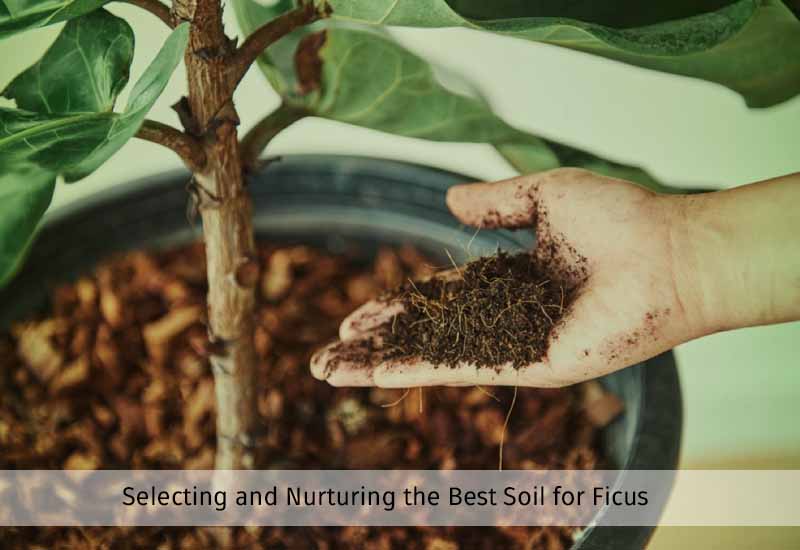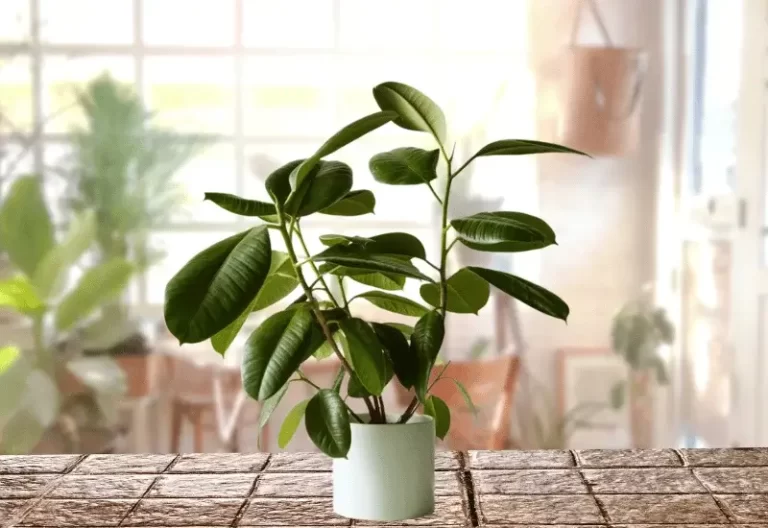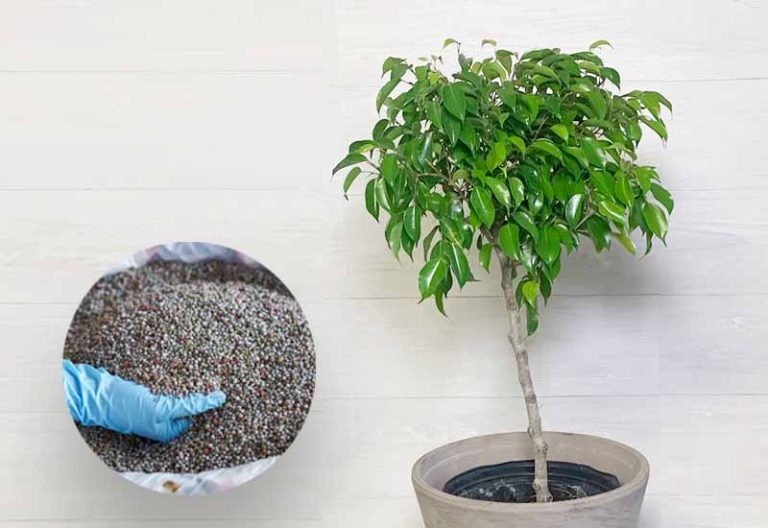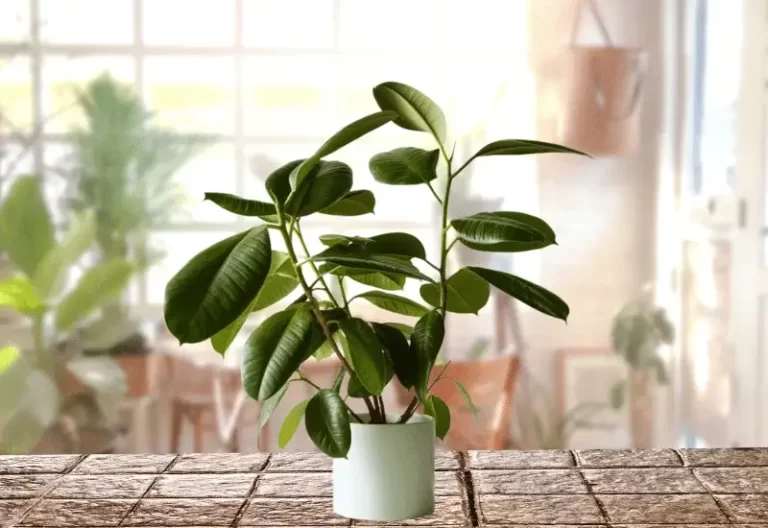Best Soil for Ficus Plant/Tree
Selecting the Best soil for Ficus plants is not just a matter of convenience but a crucial aspect of their overall well-being. Ficus plants belong to the family Moraceae, and they encompass various species. Ficus has unique soil requirements, making choosing the right soil mix for your specific Ficus variety imperative.
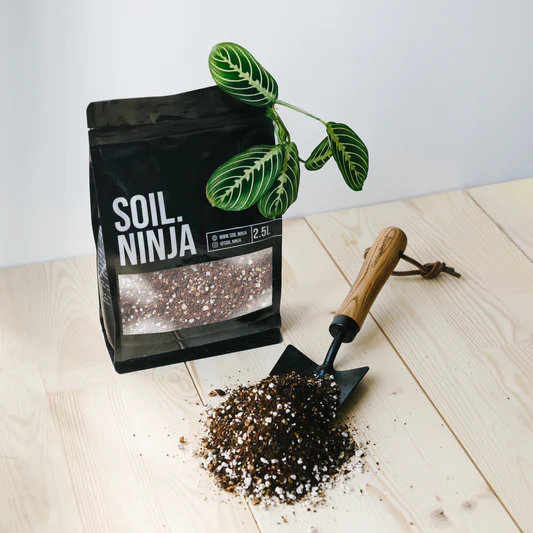
Premium Ficus Blend
This Ficus blend is a true mix of soil properties. The sand allows for loose soil with plenty of drainage, whilst the high Coco coir content and Bark allow for a medium of moisture retention.
Best soil for Ficus selection and maintenance:
| Best Soil Selection |
| 1. Choose the best soil mix tailored to your specific Ficus variety. 2. Ensure well-draining properties to prevent waterlogged roots. 3. Maintain the appropriate pH level (6.0 to 7.0) for optimal nutrient absorption. 4. Incorporate organic matter like compost to enrich the soil and improve its structure. 5. Use additives such as perlite or sand to enhance drainage and aeration. |
| Soil Maintenance |
| 1. Implement a consistent watering routine, ensuring moist but not waterlogged conditions. 2. Fertilize during the growing season with a balanced, water-soluble fertilizer. 3. Regularly test the soil for pH and nutrient levels and adjust as needed. 4. Address poor drainage or nutrient deficiencies promptly through repotting, soil amendments, or foliar feeding. 5. Monitor your Ficus plant for signs of stress or health issues and take corrective actions as necessary. |
How soil affects Ficus plant health and growth

The soil quality is paramount for the health and growth of Ficus plants. Soil is the foundation upon which these plants depend for nourishment and stability. In particular, the soil composition directly influences the plant’s nutrient intake, with the right balance of essential elements promoting robust growth and lush foliage.
Characteristics of Best Soil for Ficus
A. Well-draining properties
The first characteristic of the best soil for Ficus plants is its ability to drain effectively. Ficus plants dislike sitting in waterlogged soil, which can lead to root rot and other fungal issues. Well-draining soil allows excess water to escape, ensuring the roots remain moist but not waterlogged. Consider using the best soil mix that includes perlite or sand to improve drainage and prevent water from stagnating around the root zone.
B. pH level
Maintaining the correct pH level is another crucial factor in Ficus plant care. Ficus plants thrive in slightly acidic to neutral soil with a pH range of 6.0 to 7.0. This pH range optimizes nutrient availability, allowing Ficus plants to absorb essential elements efficiently. You can periodically test the pH of your soil and adjust it as needed with soil amendments to keep it within this preferred range.
C. Organic matter content
Soil for Ficus should contain an adequate amount of organic matter. Organic matter provides plant nutrients and improves soil structure, moisture retention, and microbial activity. Incorporating compost or well-rotted organic material into the soil mix can enhance its fertility and overall health, benefiting your Ficus plants.
D. Aeration and compaction considerations
Proper aeration and the prevention of soil compaction are essential considerations for Ficus soil. Ficus roots require oxygen for respiration, and compacted soil can limit access to this vital element. Choose soil that allows for good aeration, and consider using containers with drainage holes to promote air circulation around the roots. Avoid over-packing the soil when planting or repotting Ficus plants, as this can lead to compaction issues over time.
Types of Soil Mixtures for Ficus
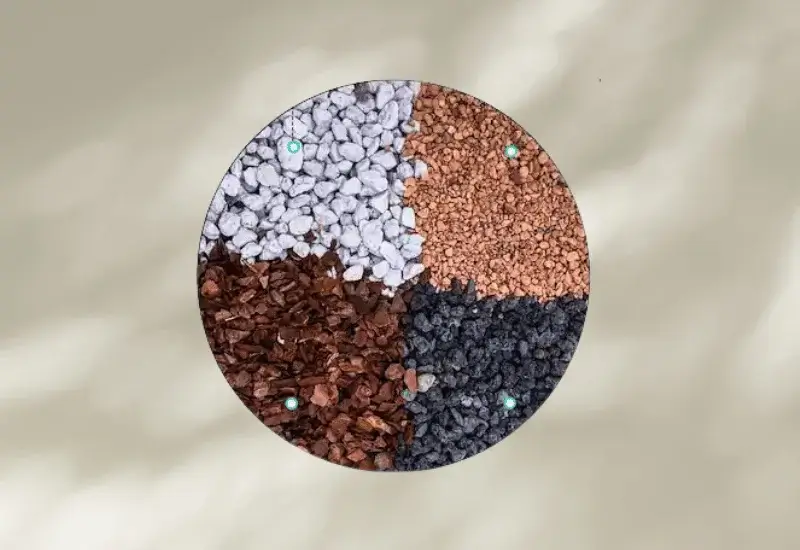
A. Commercial potting mixes
Commercial potting mixes are a convenient option for many Ficus enthusiasts, offering a pre-made solution tailored to the general needs of indoor and outdoor Ficus plants. These mixes typically contain organic matter, perlite, and other components that promote drainage and nutrient retention. While convenient, it’s important to note that not all commercial mixes are created equal. Be sure to select one that aligns with the specific requirements of your Ficus variety, as different species may have slightly different needs.
B. Homemade soil mixtures
For those who prefer a more customized approach, homemade soil mixtures allow you to tailor the blend to suit your Ficus plant’s requirements. Creating your soil mix can be rewarding and cost-effective, offering greater control over the components and ratios.
1. Components (e.g., peat moss, perlite, vermiculite)
When preparing a homemade soil mixture for your Ficus plants, consider the following components:
a. Peat Moss: Peat moss is an excellent choice for moisture retention and organic matter. It provides a stable base for your soil mix and contributes to water conservation.
b. Perlite: Perlite is a lightweight, porous material that enhances soil aeration and drainage. It prevents compaction and ensures that the roots have access to sufficient oxygen.
c. Vermiculite: Vermiculite aids in water retention while improving soil structure. It can be particularly beneficial if you live in a dry climate or your Ficus requires consistently moist conditions.
d. Compost: Adding well-rotted compost introduces valuable nutrients and beneficial microorganisms to the soil. Compost also contributes to the overall health of your Ficus plant.
2. Ratios for different Ficus varieties
Here are some general ratios for creating a well-balanced soil mix for Ficus plants:
For Ficus Benjamina (Weeping Fig):
- Peat Moss: 1 part
- Perlite: 1 part
- Compost: 1 part
This balanced mixture provides good drainage and moisture retention, suitable for Ficus benjamina’s medium to high humidity requirements.
For Ficus Lyrata (Fiddle Leaf Fig):
- Peat Moss: 2 parts
- Perlite: 1 part
- Vermiculite: 1 part
Fiddle Leaf Figs benefit from a slightly higher moisture-retentive mix to mimic their natural habitat, tropical rainforests.
For Ficus Elastica (Rubber Plant):
- Peat Moss: 2 parts
- Perlite: 1 part
- Compost: 1 part
Rubber plants prefer a well-draining mix that doesn’t hold excessive moisture to prevent root rot.
These ratios are general guidelines, and you may need to adjust them based on the specific conditions of your environment and the individual preferences of your Ficus plants. Constantly monitor your plants’ performance and adjust the soil mix to ensure their health and vitality.
Container gardening and potting soils
Container Selection: When growing Ficus in containers, choose pots with drainage holes to prevent waterlogging. The container size should accommodate the Ficus’s root system, allowing room for growth.
Potting Soil: Select a high-quality, well-draining potting mix for indoor plants. These mixes often contain the right balance of peat moss, perlite, and other additives to ensure optimal aeration and moisture retention.
Repotting: Ficus plants may need to be repotted into larger containers to provide more space for their roots. Repotting should typically be done every 2-3 years or when the plant outgrows its current pot.
Fertilization: Ficus plants in containers benefit from regular fertilization. Use a balanced, water-soluble fertilizer during the growing season (spring and summer), but reduce or stop fertilizing in the fall and winter when growth slows.
Soil Maintenance for Ficus Plants
A. Watering practices
Consistent Moisture: Ficus plants prefer constant moisture levels, so it’s essential to establish a regular watering routine. Water thoroughly when the top inch of the soil feels dry to the touch. Avoid overwatering, which can lead to root rot and allow excess moisture to drain from the pot or planting area.
Use of Drainage Trays: Place a saucer or drainage tray beneath the pot when growing Ficus in containers to catch excess water. Empty the saucer promptly to prevent the plant from sitting in standing water.
Adjustment for Seasonal Changes: Be mindful of seasonal variations in watering needs. Ficus plants may require more water during the active growing season (spring and summer) and less during the dormant period (fall and winter). Adjust your watering schedule accordingly.
B. Fertilization and nutrient management
Balanced Fertilizer: Fertilize your Ficus plants with a balanced, water-soluble fertilizer during the growing season (spring and summer). Look for a formulation with equal or near-equal proportions of nitrogen (N), phosphorus (P), and potassium (K) unless specific deficiencies are identified.
Frequency: Fertilize every 4-6 weeks during the growing season, but reduce or suspend fertilization during the dormant months. Follow the manufacturer’s instructions for application rates.
Micronutrients: Consider supplementing with micronutrients, especially if your Ficus shows signs of nutrient deficiencies, such as yellowing leaves or slowed growth. Iron, manganese, and zinc are essential micronutrients for Ficus plants.
C. Soil testing and pH adjustment
Regular Soil Testing: Periodically test the pH and nutrient levels of your Ficus plant’s soil. Soil testing kits are readily available and can help you understand the soil’s condition.
pH Adjustment: If the soil pH falls outside the preferred range of 6.0 to 7.0 for Ficus plants, make pH adjustments using appropriate amendments. You can add ground limestone to raise the pH (make it less acidic). To lower the pH (make it more acidic), use sulfur. Follow recommended application rates and retest the soil to achieve the desired pH level.
Micronutrient Supplements: If soil tests reveal deficiencies in specific nutrients, address them with appropriate supplements or fertilizers tailored to the deficiencies identified in the test results.
Troubleshooting Soil Issues
A. Recognizing signs of soil-related problems
Poor Drainage:
Wilting: Excessive moisture in the soil due to poor drainage can cause Ficus plants to wilt, even if the soil surface appears moist.
Yellowing Leaves: Waterlogged roots may lead to yellowing leaves as they struggle to absorb nutrients and oxygen.
Mold or Mildew: Constant moisture in the soil can promote mold or mildew growth on the soil surface.
Nutrient Deficiencies:
Yellowing Leaves: Yellowing of leaves, especially along the veins, can indicate nutrient deficiencies, such as iron (chlorosis) or nitrogen.
Stunted Growth: Slow or stunted growth, despite proper care, may indicate a lack of essential nutrients in the soil.
Leaf Drop: If your Ficus is dropping leaves prematurely, it might be due to insufficient nutrients to support its foliage.
B. Corrective actions for poor drainage or nutrient deficiencies
Poor Drainage:
Repotting: If your Ficus is in a container and suffering from poor drainage, consider repotting it into a pot with better drainage and a well-draining soil mix.
Amend Soil: For in-ground plantings with drainage issues, amend the soil with organic matter, like compost or well-rotted leaves, to improve drainage.
Raise the Pot: When growing Ficus in containers, elevate the pot slightly by placing it on pot feet or bricks. This allows excess water to escape more effectively from the drainage holes.
Nutrient Deficiencies:
Fertilization: Address nutrient deficiencies by adjusting your fertilization routine. Choose a fertilizer that addresses the specific nutrient deficiency identified through soil testing.
Foliar Feeding: In severe nutrient deficiencies, you can apply a water-soluble fertilizer directly to the leaves (foliar feeding) to provide a quick nutrient boost.
Slow-Release Fertilizers: Consider using slow-release fertilizers for a consistent nutrient supply over an extended period.
Consult with Experts: If you’re unsure about the specific issue affecting your Ficus or if the problem persists despite corrective actions, consult with a local nursery or horticultural expert. They can provide personalized advice based on your plant’s and local growing conditions.
Final Words
The selection and maintenance of suitable soil are paramount for the health and vitality of your Ficus plants. The soil is the foundation upon which these magnificent plants depend for essential nutrients, proper moisture levels, and robust root development. By choosing the best soil mix and implementing a consistent care routine, you can create an environment where your Ficus plants thrive, gracing your indoor and outdoor spaces with their beauty and elegance.
FAQs About Ficus Soil
1/ What type of soil is best for Ficus plants?
Ficus plants thrive in well-draining soil mixes, including peat moss, perlite, and compost. The exact composition may vary depending on the specific Ficus variety.
2/ Can I use regular garden soil for my Ficus plant?
While garden soil can be used, it’s generally not recommended for Ficus plants, especially when grown in containers. Garden soil is often too heavy and can lead to poor drainage, harming Ficus plants.
3/ How often should I water my Ficus, and how much water does it need?
Watering frequency depends on factors like temperature, humidity, and the size of the plant. Water your Ficus when the top inch of the soil feels dry. Water thoroughly, but avoid letting the plant sit in standing water.
4/ How do I know if my Ficus needs repotting due to soil issues?
If your Ficus becomes root-bound, shows signs of stunted growth, or has trouble retaining moisture, it may be time to repot it into fresh soil with a larger container.
5/ Can I use the same soil for indoor and outdoor Ficus plants?
Indoor and outdoor Ficus plants may have different soil requirements due to variations in environmental conditions. Selecting soil mixes that best suit each location’s specific needs is advisable.
6/ Should I fertilize my Ficus regularly, and what fertilizer is best?
Yes, Ficus plants benefit from regular fertilization during the growing season (spring and summer). Use a balanced, water-soluble fertilizer, and follow the manufacturer’s instructions for application rates.
7/ What should I do if my Ficus plant leaves turn yellow?
Yellowing leaves can indicate issues, including overwatering, underwatering, nutrient deficiencies, or poor drainage. Carefully assess the soil moisture, check for proper drainage, and consider conducting a soil test to address nutrient deficiencies.
8/ Can I reuse the same soil for my Ficus plant after repotting?
Reusing soil from previous pots is generally not advisable, especially if it’s old and depleted of nutrients. Fresh potting mix provides a healthier environment for your Ficus plant.
9/ How can I adjust the pH of the soil for my Ficus plant if it’s too acidic or alkaline?
You can add ground limestone to raise the pH (make it less acidic). To lower the pH (make it more acidic), use sulfur. Follow recommended application rates and retest the soil to achieve the desired pH level.
10/ What’s the best way to prevent soil-related issues in Ficus plants?
The best prevention is to start with the right soil mix, maintain proper watering practices, and monitor your Ficus for signs of stress or nutrient deficiencies. Regular soil testing can also help catch and address issues early on.

